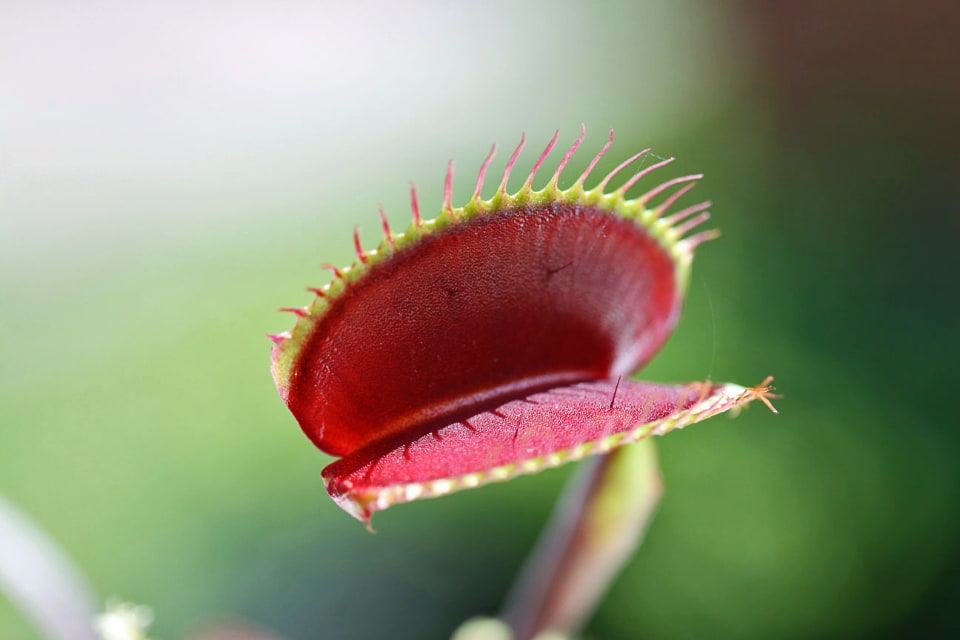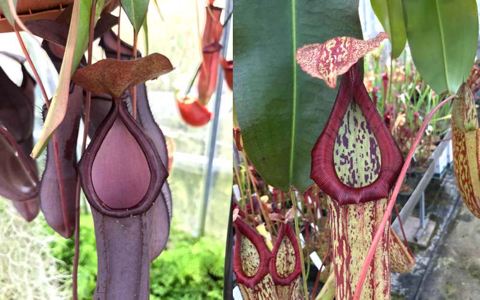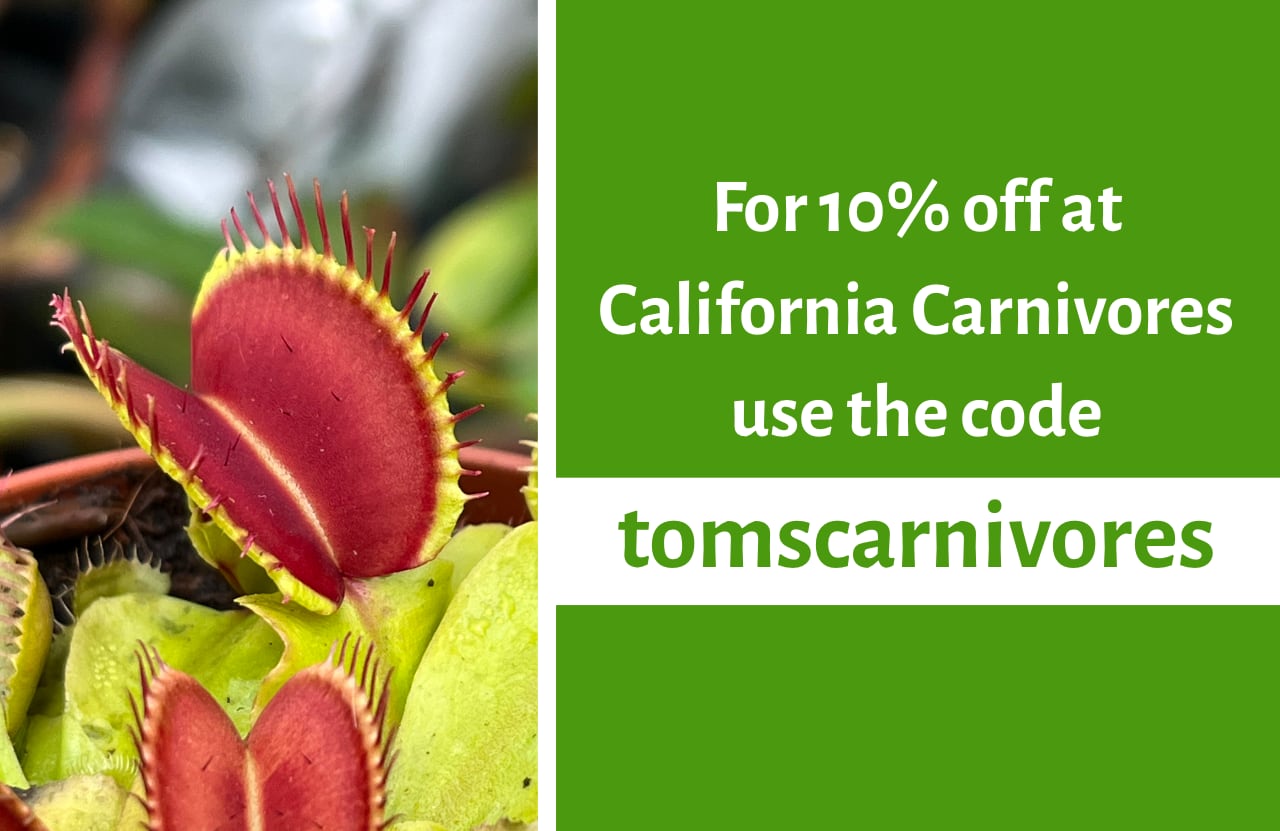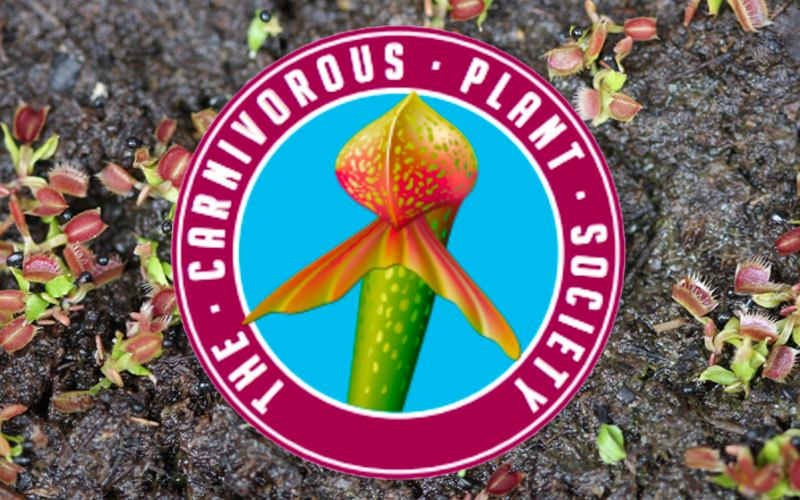
How to use the CPS Seed Bank
Published 19 June 2017, updated
If you want to grow carnivorous plants from seed - and support a great cause while you’re at it - then joining the UK Carnivorous Plant Society is one of the best things you can do.
As a member, you’ll get access to the world’s leading carnivorous plant seed bank. The cost of membership (£20/year) includes an annual allowance of 4 free seed packets, meaning you can claim seeds of whichever species you wish to grow at no additional charge. There are 14 different genera and over 500 species and hybrids available - this includes beginner-friendly plants like Venus flytraps and common Sundews, as well as rarer plants like Cephalotus and Byblis. The full list is available here on the CPS website.
I recently spoke to the society’s Seed Bank Organiser Sheila Little about how the scheme works, and how new members can get involved. To learn more, and for tips on pollinating common carnivores, read on!
How does the CPS seed bank work?
All members of the CPS are entitled to 4 free packets of seed with each year’s subscription, and these can be taken at any time throughout the year. They are able to purchase two extra packets at a cost of 50p per packet.
We also have a scheme for donations where for every two types of seed donated to the seed bank, the donor can have one packet in return. There are no restrictions on which seeds a donor can have, so they may send in a couple of common species and take a rare packet of seed in return. The extra packets scheme for donors has no restriction on numbers of packets allowed.
Which species or varieties are always in high demand? Which are usually readily-available?
I update the list on the CPS website as I go along, so if it is on the list, it is in stock. Only members can order from the list, although I am always happy to trade with non members as well.
Some species run out really quickly. Any Cephalotus, Byblis, Roridula, Nepenthes, and Drosophyllum are always popular, but can be difficult to source and some are difficult to grow well.
For beginners there are many different Drosera species that are very easy. D. binata, D. capensis, D. filiformis, D. nidiformis and D. spatulata are very easy and all very pretty. There are many others that would be good for beginners, but these are the most popular. Sarracenia are also very easy to grow and all species and hybrids are good for beginners - none are particularly difficult to get growing or to keep once they have germinated.
How much seed is included in a single packet?
How many seeds you get and how many plants you can grow depends on the variety and where the seeds came from.
I have a yearly allowance from the Society to buy in some of the rarer seed such as Byblis and rare Drosera, so I have to source the seed from growers around the world. I buy from European growers and from seed suppliers around the world that are known to comply with the Nagoya Protocol. If I have to buy a packet of rare seeds, I have to try to get at least two packets out of that. Some of the rare seed packets may only contain a dozen seeds when I buy them, some may contain fifty seeds, so it depends on how many the seed bank has.

For Sarracenia, I try to give around thirty seeds to a packet, but again some of the harder-to-get seeds such as S. psittacina and S. minor are not often donated - I may have to buy packets with just twenty seeds, so I may not be able to give as many. Common Drosera you may get a few hundred seeds in each packet! I always give as many seeds as I can, and how many plants you get varies with which plants you are trying to grow.
Can anyone donate? How should members go about making a donation?
Anyone can donate, but if a non-member wants to have seed in return, it is a trade rather than a donation and this is treated a little differently. A member who donates can have any seed in return. Someone who is not a member would need to offer something rare or not on our list in order to get something rare in return.
All donations are sent directly to me. Just send them to Sheila Little, 471 Canterbury Way, Stevenage, SG1 4EQ.
How does the seed bank help to protect endangered carnivorous plants?
When people take seed from seed banks, they can be sure the seed has been legally collected. Growing from seed can also save plants from being dug up from wild locations. There really is no need to take wild grown plants any more. Seed can easily be sourced for almost all carnivorous plants now.
Many plants have original location data on them. Many of the locations have been bulldozed for shopping malls and building homes, so some of the plants in cultivation no longer exist in the wild and are now only preserved in people’s collections.
For newer growers who are interested in getting involved, are there any tutorials or books you would recommend for guidance on pollination and seed collection?
There are many good books out now that will show you how to pollinate your plants and propagate seed. The Savage Garden by Peter D’Amato has always been a popular book that people find very useful, but all the available books will give useful little hints and tips on growth and pollination. With new books coming out all the time, you really are quite spoilt for choice.
Tips for pollinating the most common genera are given below.
Pollinating North American Pitcher Plants
For Sarracenia, it is a good idea to put a piece of net around the flower head to stop bees from pollinating them with a different pollen to the one you want to make a cross with. The bag is only needed from a couple of days before the petals have fully opened until a couple of days after the petals have dropped off, then they can be removed. Then you really just need to remember to take care not to mix pollen on a brush.
When you pollinate a plant, use one paint brush (or cotton bud) per flowering plant. When you have used the brush, stick it brush-upwards into the soil of the plant you took the pollen from. Then, when you wish to use that plant’s pollen on any other plant, you know that the brush only has the pollen you want to use on it.
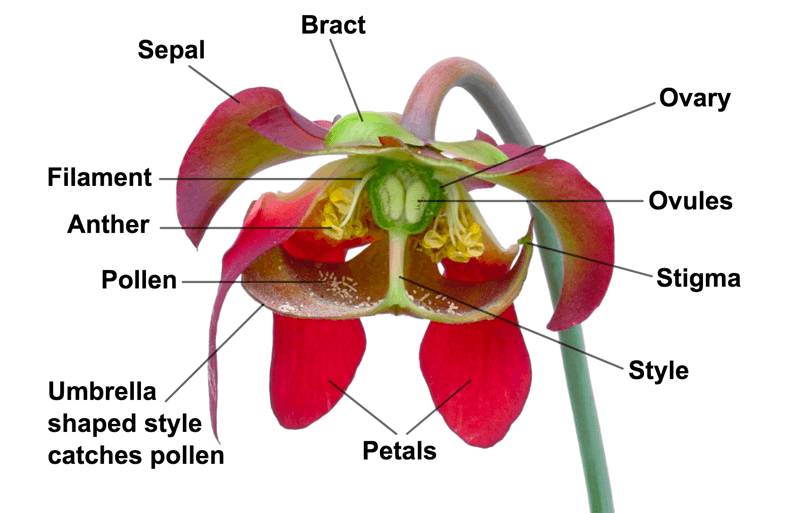
To pollinate a Sarracenia, lift a petal on the flower. The pollen is a yellow powder that drops from the anthers into the umbrella-shaped style. Dip the brush into the pollen and then at the five points of the style are little bumps. These are the stigma; brush the pollen onto each of the five stigma, re-cover the flower, and you should have seed in the autumn.
If you don’t have enough brushes, make sure you clean the brush thoroughly before using it on a different pollen, so you can be sure that you are getting the right cross. Sarracenia seed is ripe at the end of the season, and usually between October and November the pod will brown, at which point it is ready for harvest.
Learn more on thepitcherplantproject.com.
Pollinating Sundews
Many Drosera, especially the more-common easy-to-grow ones, will self pollinate, so you don’t need to do anything to obtain seed. A few do require cross pollination though, so always check to see if a Drosera will produce viable seed without intervention.
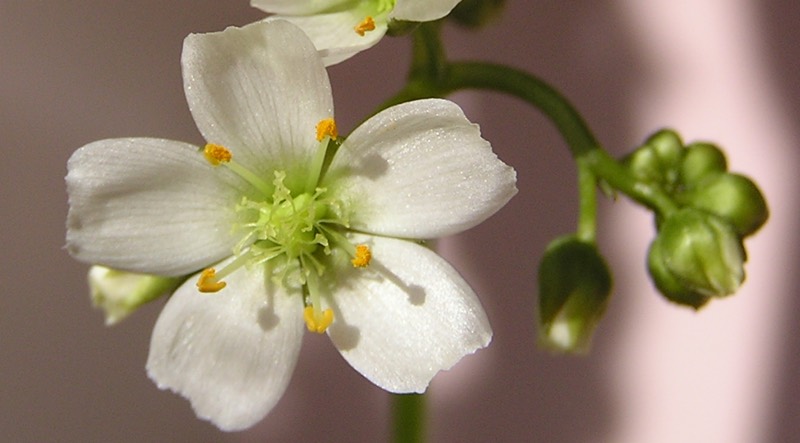
Once Drosera seed is ripe, the pods will turn black. Hold a piece of paper underneath the stalk, shake it, and if the little black dust-like seeds come out onto the paper, you know the stalk is ready for harvesting.
Learn more on growsundews.com.
Pollinating Venus Flytraps
Dionaea muscipula (the Venus Flytrap) can be pollinated by rubbing flowers together.
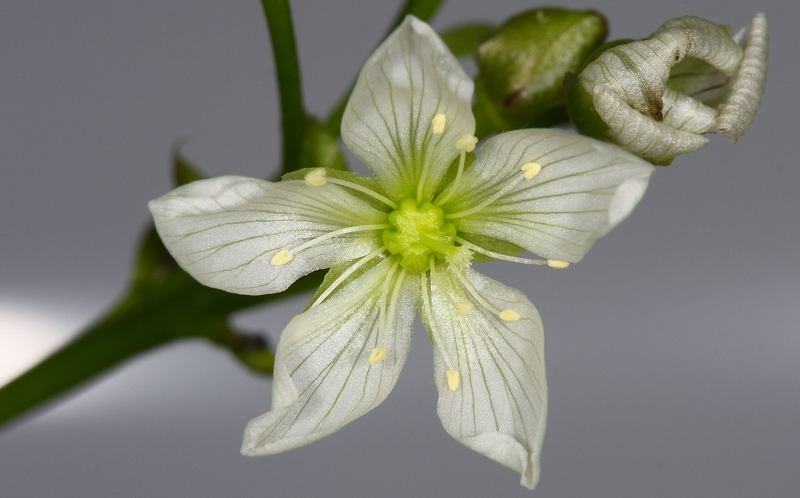
The pods will swell after the flower dies off and when the pods are black and start to split, the shiny black seeds can be harvested.
Pollinating Tropical Pitcher Plants
Nepenthes are a little different, in that some plants are male and some are female. Nepenthes therefore cannot self-pollinate. You need a flowering male plant with which to pollinate a flowering female plant in order to make viable seed.
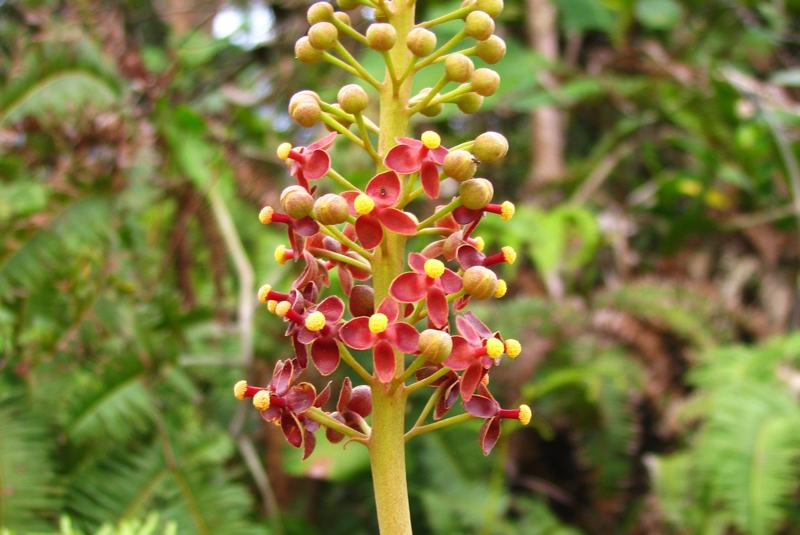
Nepenthes will produce seed even without pollination; it just isn’t viable, so when sending in Nepenthes seed it is vital that both parent plants are named, even if they are a male and female of the same species.
Learn more on Brad’s Greenhouse YouTube channel.
Many thanks to Sheila Little. You can read more about the CPS, the seed bank, and the many other benefits of membership at thecps.org.uk.
I've been growing carnivorous plants for over 2 decades, having been fascinated by these plants since I got my first Venus flytrap at age 10. I now have a large greenhouse to house my collection and am an avid breeder of Nepenthes pitcher plants.
- Next post: A look at the Nepenthes breeding program at Predatory Plants
- Previous post: Q&A with Peter D'Amato of California Carnivores


